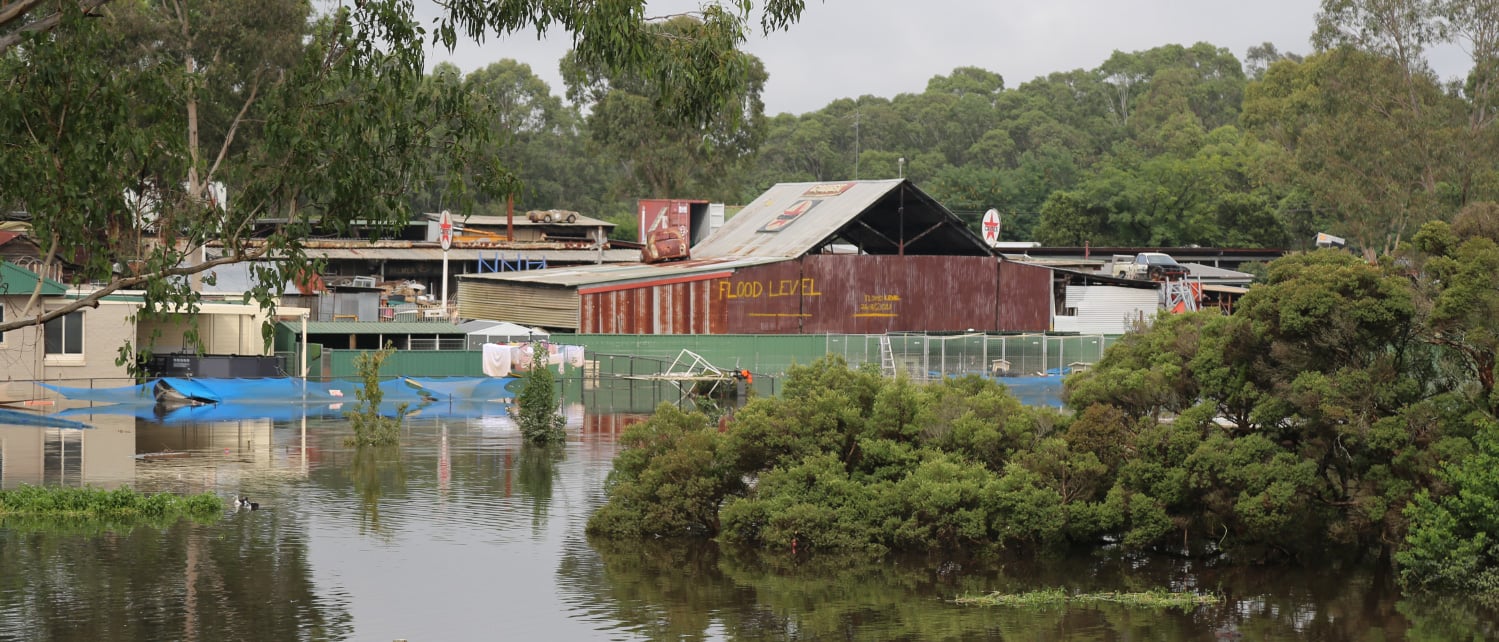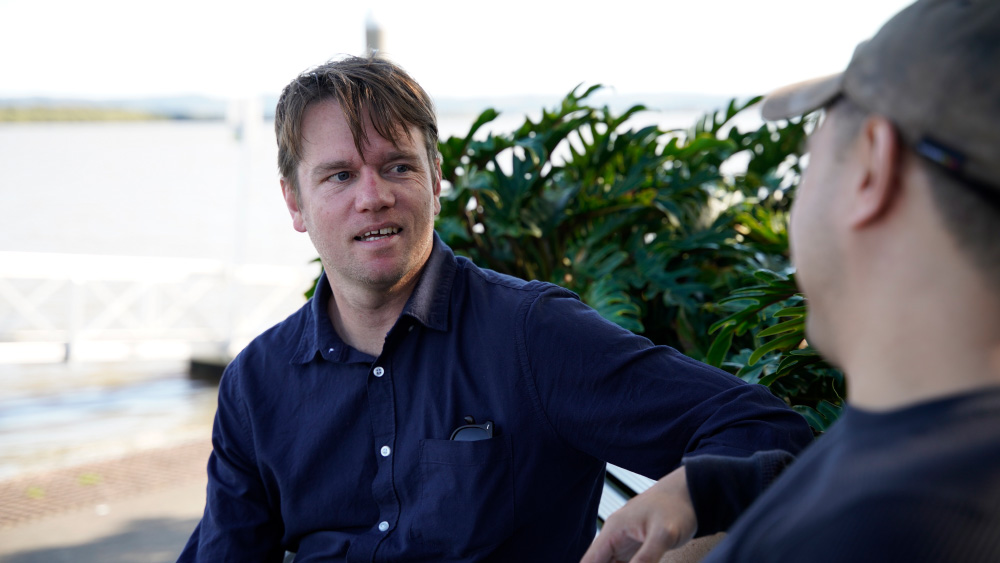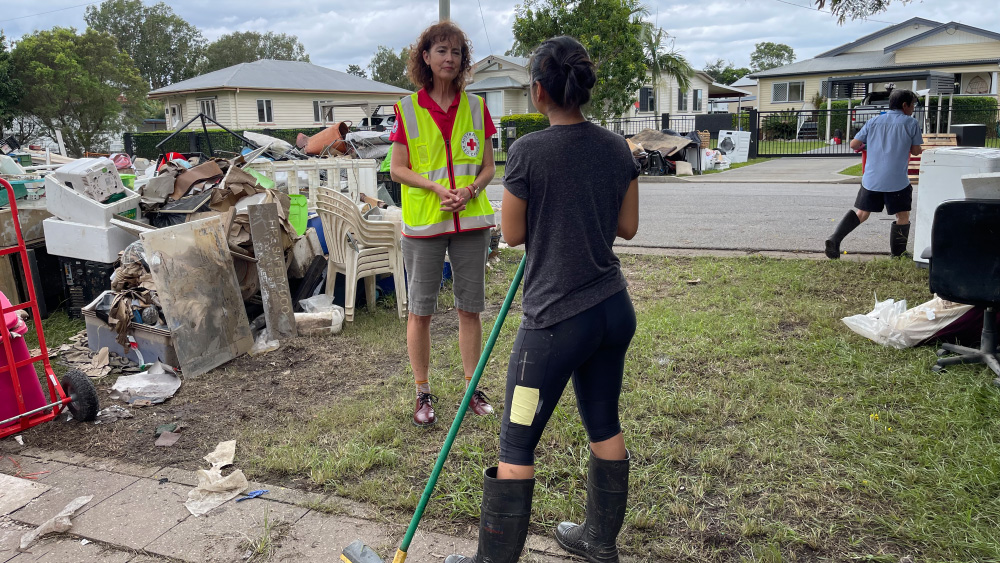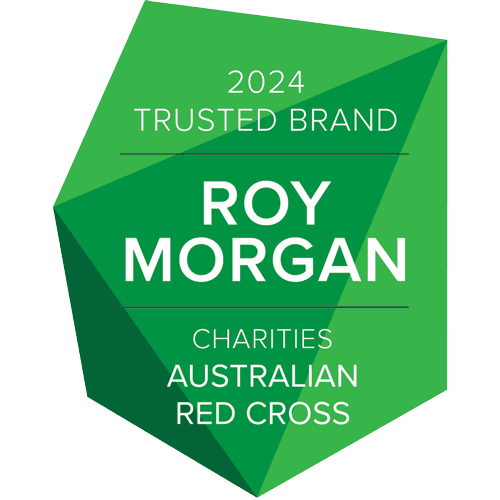
The road to recovery
Months on from the Queensland and New South Wales floods, communities are rebuilding and recovering with the support of Red Cross teams.
James is a Red Cross Recovery Officer, currently working in communities to support recovery from the floods in Northern New South Wales, from Ballina, down the coastal part of the Richmond Valley, Woodburn, New Italy and Coraki.
On the surface, it’s an overwhelmingly huge job. But thanks to the strength of the communities, and the willingness of so many to help, flood-impacted places across Queensland and New South Wales are on the road to recovery.
“The task at hand to begin the clean-up seems absolutely mammoth. But when you get in there and get it done, there were just people who would come from everywhere, all over the east coast to come and help communities like us.”

In the aftermath of a disaster the size and scale of the February floods, nothing is more important than community. James and his fellow recovery officers work to empower and equip communities to lead their own recovery. Red Cross’ decades of experience in disaster recovery has shown this approach leads to the best long-term outcomes.
“The sense of community and the concept of community and recovering from a disaster is the core element, it’s the key ingredient of recovery.”
The only way to do recovery is community-led recovery. And that means that the control of the recovery needs to be owned by the community.
Community-led recovery is also an opportunity to build resilience and be better prepared for future disasters.
“One thing that happens sometimes after disasters is that neighbours and little neighbourhoods that may not have known each other that well, usually get to know each other a lot better. And that really helps with the sense of community, and also building that resilience, which is really, really valuable moving forward.”

As tens of thousands of people continue to work toward rebuilding and recovering after the most recent floods, James says that it’s more vital than ever for all of us to be prepared for a disaster or emergency.
“Having that plan months in advance, means when you might be in a state of panic, and maybe not thinking straight, that plan is there and you can fall back onto it. Some of the things you can do to prepare yourself and your family and community for a disaster is get to know your neighbours and your community. Have a bag packed well in advance. And if safe, have somewhere to evacuate to, and somewhere safe to go that you’ve already organised.”
This story was collected with the support of our proud partner Australia Post.
Getting prepared is simple.
Being prepared can make an emergency or disaster less stressful, give you more control, and reduce the impact on you and those you love.
More in Emergency Services
When crisis strikes, we are there for people
Thanks to our generous donors our teams are on call, ready to help 24/7, 365 days a year.
Queensland and New South Wales Floods Report
Two years after devastating storms and floods hit Queensland and New South Wales, the work of recovery continues.
How your donation made a difference in Türkiye and Syria
From heartbreak to healing: Türkiye Syria Earthquakes Appeal 12 month impact report
Charity donations of $2 or more to Australian Red Cross may be tax deductible in Australia. Site protected by Google Invisible reCAPTCHA. © Australian Red Cross 2025. ABN 50 169 561 394
